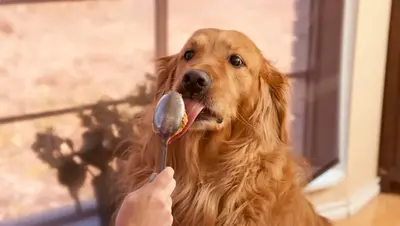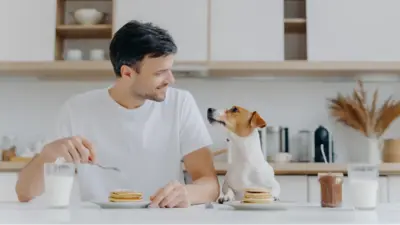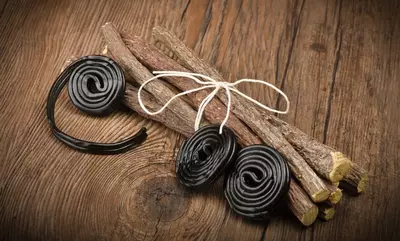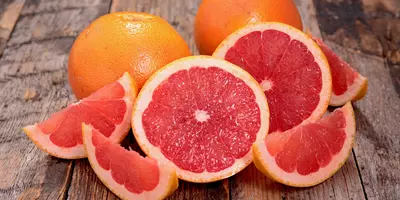Can Dogs Eat Peas?
- 25 May 2023
- 5m read

Yes, dogs can eat peas.
Peas are safe for dogs to eat in moderation and can contribute to a healthy and happ-ea wellbeing. Sorry, the temptation was just too much. However, there are a few things to bear in mind when feeding peas to your dog, so we’ve put together an all-you-need-to-know guide.
Are Peas Good for Dogs?
Yes, peas are good for dogs.
These little green wonders are full of benefits for your pooch. The list is endless, but these are some of the best ones:
Packed full of vitamins and minerals
Peas contain essential nutrients like vitamin K, vitamin C, vitamin A, potassium and iron, all of which are essential for a balanced diet for your dog.
Pea-licious
Small but mighty, peas are full of flavour to set your dogs taste buds into overdrive. Many dogs are just like us and enjoy some flavour variety in their diet.
Good for sensitive tums
Peas are considered a hypoallergenic food. This means that they are very unlikely to induce any intolerance symptoms in dogs, such as vomiting and diarrhoea. What's more, peas are very fibre dense, meaning that they can help to support healthy digestion.
Antioxidant properties
Peas contain antioxidants like flavonoids and carotenoids, which can help combat free radicals in your dog's body, as well as providing immune support and protection against certain diseases. You go peas.
Can Dogs Eat Raw Peas?
Yes, dogs can eat raw peas.
These can be fed to your dog as a delicious snack, but be mindful that they might find them a little bit difficult to chew, so don't feed them too many at once.
Avoid feeding your dog raw veg if they have any existing dental or digestion issues, as this can cause further problems.
Can Dogs Eat Cooked Peas?
Yes, dogs can eat cooked peas.
Boiling or steaming peas is the best and healthiest way to prepare them as both methods retain much of the nutritional value. They should be unseasoned and cooked using only water, that means no oils, salt or pepper as these are toxic to your pooch. You should also ensure that peas have fully cooled after cooking before plating them up.
Although dogs can eat peas raw, cooking them helps to improve digestibility meaning that your pup is less likely to experience things like bloating, gas or diarrhoea.
Can Dogs Eat Frozen Peas?
Yes, dogs can eat frozen peas.
Freezing veg helps to retain their nutritional value and of course, keeps them fresh for longer. Whilst dogs can technically eat frozen peas, we would recommend allowing them to thaw or gently cooking them before giving them to your dog, as this will make them easier to chew and digest.
Avoid feeding your dog frozen veg if they have any existing dental or digestion issues, as this can cause further problems.
How to Feed Your Dog Peas
Peas can be given to your dog in controlled quantities as a snack, reward or mixed into their meals. Start with half a dozen at a time to ensure that your pup isn’t biting off more than they can chew.
If your dog is a puppy, small in stature or experiencing dental problems, it might be a good idea to mash up cooked peas for them to eat instead. A puree is less likely to cause problems like choking or discomfort as it is easy to chew, swallow and digest.
Alternatively, an easier option is to opt for a dog food that uses peas in their recipes, like us here at Butternut Box. This ensures that your dog is eating vegetables regularly at mealtimes and benefitting from all of the nutrients and dietary fibre that peas can offer.
Things to Consider When Feeding Your Dog Peas
Peas are incredibly small and can pose a choking hazard to smaller dogs. Whilst it is unlikely, you should stay close by whilst your dog is eating them.
When introducing new foods to your dog's diet it is impawtent to do so gradually. It is hard to decide how your dog will react to a new food until they’ve eaten it, so keep portion sizes minimal and monitor their reaction. If they enjoy the food and have no adverse reactions, you can slowly introduce bigger quantities.
However, we would recommend keeping treats, regardless of how healthy they may be (veggies we see you) to a minimum. 90% of their diet should consist of nutritionally-complete meals, with 10% being allocated to some much deserved treats.
If you have any queries about feeding your dog new foods, it is always best to chat with your vet first for more advice.
Other Vegetables That Are Safe for Dogs to Eat
Peas are joined by an army of other pooch-pleasing vegetables, such as:
• Broccoli
• Sweet potato (especially good for dogs with diabetes due to its low GI)
• Carrots
• Cauliflower
• Celery
• Green beans
• Parsnips
• Spinach
• Butternut squash
• Kale
• Brussel sprouts
• Peppers
• Beetroot
• Cucumber
Peas in Butternut Box Meals
At Butternut Box, we include peas in a lot of our meals, such as Beef It Up, Chicken You Out, Pork Of The Town and Gobble Gobble Turkey. We also have meals that don't use peas in the recipe. Other vegetables need their time to shine, too! Our pea-less meals include: Wham Bam Lamb, Duo of Duck and Chicken, Salmon to Love and You've Got Game.
We only use the best-quality ingredients in our meals. As well as 60% human-quality meat, vegetables form the basis of our recipes, alongside things like lentils and pearl barley. Because we believe dogs deserve better.
You don’t have to worry about guesswork either, we use the perfect balance of ingredients in our meals to ensure that they are nutritionally complete, providing your dog with all the nutrients that they need to thrive.
At sign up, we will ask you a few questions about your dog, such as their breed, age and activity level. This will help us to calculate exactly how many calories they need, as well as the flavours that would best suit their preferences and lifestyle.
Click the Build Your Box button below to get an exact price and plan.

.webp)


